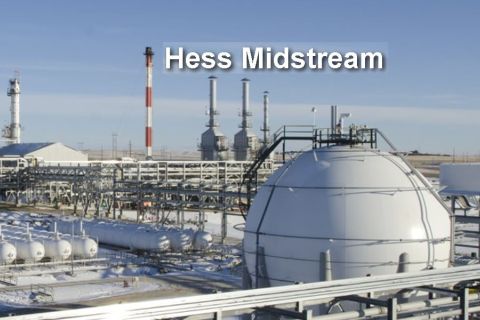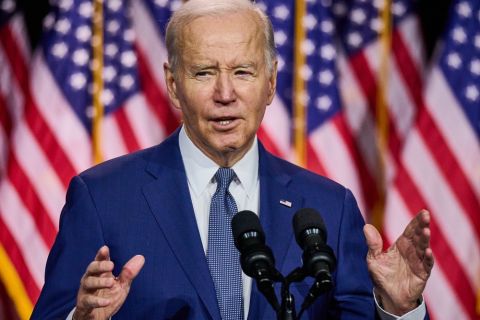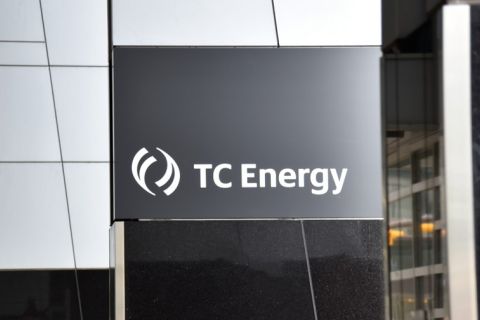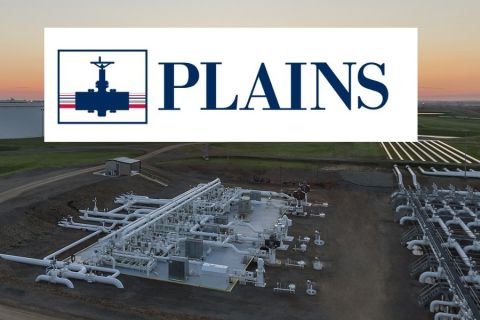
Conference speakers see better times ahead for Appalachia’s midstream.
Things are better. That was a common point the 1,000 attendees heard from some two-dozen speakers at Hart Energy’s ninth annual Marcellus-Utica Midstream Conference & Exhibition (MUM) in Pittsburgh.
Opening keynote speaker Robert Phillips, chairman, president and CEO of Crestwood Equity Partners LP, declared “2017 was a good year; 2018 is going to be a great year” for his company. Crestwood has important midstream assets in West Virginia and Northeast Pennsylvania.
Phillips told the audience the Marcellus and Utica’s unparalled natural gas resources have long-term growth potential not only for Crestwood, but also the entire industry.
“In our view, it has an endless supply of gas for both the Northeast gas markets and the rest of the U.S.,” he said.
Already, the twin plays account for 35% of U.S. gas production, about 22 billion cubic feet per day (Bcf/d)-25 Bcf/d. “It is the largest single source—and a vital source—to all the markets now,” Phillips added.
But he cautioned that long-term optimism for the plays—particularly beyond 2020—depends on several factors, not the least of which is the need for additional infrastructure.
“Today there are approximately 17.5 Bcf/d of pipeline projects underway. Most of those were underwritten by producers,” he said. “We believe most of those projects will largely fill up in the next three years. Therefore, we may be right back here needing more projects to drive more supply development” in the near future, he added.
The takeaway task
Phillips said northeastern Pennsylvania Marcellus growth forecasts are entirely contingent on takeaway capacity.
“We think it’s dependent on how many projects we can get out,” he said. “We think Northeast Pennsylvania needs another 3 Bcf/d- 5 Bcf/d to realize its full potential.”
Of course, adding capacity faces regulatory challenges. Phillips said Crestwood operates in several basins across the U.S. so he couldn’t say that the regulatory environment was any more challenging in the Northeast than anywhere else, but admitted that regulatory difficulties in the Marcellus-Utica are significant and threaten future gas growth in the region.
“This is hand-to-hand combat in this region. Not only do we have to deal with the federal regulatory environment, but also numerous state-level regulatory agencies that have to clear to get projects built to evacuate that gas and get it exported,” he said.
For that reason, Phillips said the southwestern Marcellus has an advantage that will continue to lead to a “fairly large basin [price] differential” that will work against the producers in Northeast Pennsylvania from an economics standpoint.
Volatility
Phillips also cited the need to manage the region’s volatility. Crestwood owns 50% of the Stagecoach storage facility in Northeast Pennsylvania.
“We live on volatility. We predict more volatility. We’ve seen it this winter,” he said, adding it’s another reason the region needs more connectivity to manage demand and growth as well as price swings.
January’s cold spell produced a significant spike in gas prices. “It was a real demand event that we haven’t had in about four years. We’ll continue to see that spike when we have that kind of demand and limited supply,” he warned.
Exports are increasingly important for the Appalachian plays and the nation’s energy as a whole, Bernadette Johnson, vice president of market intelligence for Drillinginfo Inc., said in her presentation. Consider propane, she said.
“We’re growing supplies, and what does that mean? That puts even more pressure on the export piece and that’s because exports are key for LPG.”

Drillinginfo sees propane exports growing from 848,000 barrels per day (Mbbl/d) in 2018 to 1.155 million barrels per day (MMbbl/d) in 2022. In that time, domestic use, which jumped from 350 Mbbl/d in 2017 to 457 Mbbl/d in 2018, will remain static at about 450 Mbbl in 2022. But supply will increase by 300 Mbbl/d—so export growth must kick in.
Same for butanes, she said. Exports are expected to double to almost 400 Mbbl/d in that time frame as domestic demand dips by 5.5%. Natural gasoline paints a similar picture: domestic trends down as exports trend up.
The NGL game-changer in Appalachia is Sunoco Pipeline’s Mariner East 2 pipeline project, Amol Wayangakar of Enkon Energy Advisors told attendees. While progress has been delayed because Pennsylvania has suspended construction permits, the project’s eventual completion will transform the region’s transport of NGL from rail.
Energy and policy
Exports were part of a broader perspective discussed by Megan O’Sullivan, Jeane Kirkpatrick professor of the practice of international affairs and director of the Geopolitics of Energy Project at Harvard University’s Kennedy School. She has spent the last 25 years working with the nation’s foreign policy leaders.
“The overlap between the energy world and the foreign policy world is surprisingly small,” the former special assistant to President George W. Bush told the conference audience. “I’ve asked myself: Why do so few people wear a foreign policy lens and an energy market lens when they’re trying to understand the situations in the world today?”
O’Sullivan, author of the recently published book “Windfall: How the New Energy Abundance Upends Global Politics and Strengthens America’s Power,” added. “It’s a natural tendency for every single one of us to put weight on the things we understand and to discount the things we don’t.”

In today’s world where the interplay between energy market dynamics and foreign policy is almost seamless, O’Sullivan says the understanding of both points of view is instrumental to the industry continuing to make progress around the globe.
“Given all of the changes in energy markets and global causes that we’re hearing about, I believe that you have to wear both of these lenses if you want to understand the past, if you want to take advantage of the present, and if you want to plan for the future,” she said.
She discussed lower-for-longer oil prices and a common belief that those prices will be devastating for the Middle East.
“We might actually be looking at a future where the world is still consuming oil but at a lower cost, and it is high-cost producers that will be pushed out. So a greater percentage of what the world consumes, in fact, comes from the Middle East,” she said. “So my macro-thesis is pretty simple: there’s a big change in energy, energy markets or energy mix, so we should expect a big change in global politics.”
The next round
A roundtable on what Appalachian producers need featured three executives who know the region well: Steven M. Woodward, senior vice president of business development at Antero Resources Corp.; Chris Akers, president and COO of Eureka Midstream LLC; and Dana Bryant, senior vice presidentof midstream and marketing for Eclipse Resources.

Akers said the impact of the Rover Pipeline starting up in late 2017 was “going to be positive,” but noted it “was just one piece of getting gas out of the basin. With the Atlantic Coast and Mountain Valley pipelines taking gas to the Southeast, and other projects going to the West and Northeast, I think the basin is now getting well-shaped to be able to get gas [and/or NGL] out of the basin.”
Beth A. Hickey, senior vice president of interstate pipelines for Energy Transfer Partners LP, detailed progress on the Rover project in a separate spotlight presentation.
Woodward cited a “change going toward demand-driven projects,” with the Atlantic Coast Pipeline as an example. “It was a much-needed project to come in, and we’re excited to see that project move forward,” he said.
“As far as the future for additional projects out of the basin, the thing that I’ve been promoting is the concept of meeting halfway with demand. We’ve been talking to a number of utilities, we’ve been talking to various co-gen projects and combined cycle projects, trying to figure out ways to meet halfway on the reservation.”
As additional infrastructure is built in the basin, according to Woodward, “we’re seeing that the cost is exceeding $1, and at current Nymex gas prices it’s pretty tough for a producer to stomach the takeaway. I used to use the rule many years ago that you don’t want to spend more than 10% of the commodity price on firm transportation. Needless to say, this basin has been a very costly basin, and we’ve all exceeded that parameter.”
“There’s more certainty” now, noted Bryant, as the plays have matured. “You’re more willing to make a volume commitment.”

Rock star
Not often due federal administrators appear to be guitar heroes, but for 20 minutes on one afternoon in Pittsburgh, a government regulator, of all people, was treated like a rock star.
That Commissioner Robert Powelson of the Federal Energy Regulatory Commission (FERC) had a vote in determining whether projects move forward—that anyone had a vote on a panel which lacked a quorum for six months last year—cheered the packed house at the David L. Lawrence Convention Center.
“We are back in business at the FERC,” Powelson told the approving crowd.
Powelson, nominated by President Donald Trump last May and confirmed as a FERC commissioner in August 2017, came to the federal agency after almost nine years on the Pennsylvania Public Utility Commission (PUC). Since seats were filled last summer, the commission has moved quickly.

“Within the last seven months, this current makeup of Federal Energy Regulatory commissioners has approved $25.6 billion in pipeline infrastructure in this country,” Powelson said. “As I like to remind people, when you’re a five-member independent agency, you can come up with a lot of solutions to the problems but you can’t buy No. 2 pencils unless you have three votes; it’s that simple.”
Powelson gave a shout-out to Dominion’s Cove Point LNG terminal, set to begin operations in March, and noted the geopolitical importance of developing U.S. gas exports.
“The exploration of natural gas and the ability to move it to market is the greatest peace dividend we have,” he said.
He recalled how, during his years on the Pennsylvania PUC, a delegation from Kosovo described how Russian gas pipelines were shut off in the middle of a winter cold snap, shutting down power plants and leaving citizens without heat.
“Can you imagine that in this country?” he asked. “In this construct, with rule-of-law markets, that any operator could do that to an American citizen, an American ratepayer? But that’s the reality of how the Russians are playing with these markets.”
But Powelson expressed his own concerns about the U.S., especially regarding the radical price spikes experienced by the New England market during the recent bomb cyclone storm that struck the region.
“It’s alarming for FERC,” he said. “It’s alarming for governors in the New England market who objectively have been committed to solving their lack of pipeline capacity into the market. It really speaks to where we need to look ahead in terms of solving this energy calculus equation.”
Don’t Give Up On New England
More than 40% of homes in New England are heated by fuel oil throughout harsh winters. So during the recent mega-cold snap known as the bomb cyclone, New England burned 2 million barrels of oil in 15 days.
Erin Petkovich, who leads Enbridge Inc.’s business development team in the Northeast region, recounted the reaction of Matthew Beaton, Massachusetts’ environment and energy secretary, for Marcellus-Utica Midstream conference attendees. Beaton declared the frenzied burning “a disaster both economically and environmentally,” she said.
Petkovich outlined several developing and future projects at Enbridge that could help New England receive a steady supply of Marcellus-Utica natural gas, bolstering its readiness for the next bitter winter storm.
Fill a need
New England is paying “the highest electricity prices in the continental U.S.” The large price disparity “between where the Appalachian supplies are coming into our system and where the market price is being paid” means there is a market for gas suppliers, she said.
Of the bomb cyclone storm, Petkovich added that “[Grid operator] ISO New England said that New England would have been one more bad ice storm away from rolling blackouts … I do not want to be in a rolling blackout scenario when it is 11 degrees outside—I want that electricity on to ignite my burners so that my house is warm and electrified.”
Even when a winter is comparatively mild in New England and the Northeast, New England features a power-generation infrastructure with wide gaps in backup stability.
“We have 25 plants on our system, which represents about 60% of the gas-fired generation for ISO New England. But only about 4% of the power plant load is backed up by firm, mainline pipe capacity to the supply,” Petkovich said.
On top of the gapped infrastructure, over the past several years gas has grown to 50%—from 15%—of the region’s electricity fuel mix, she said. “But over time, there hasn’t been any new pipeline infrastructure that supports natural gas power generation.”
Enbridge has big plans to provide connectivity, which would help prevent such strain in the future. Petkovich prefaced her outline of several projects with a quick word on the changing attitude toward gas pipelines in New England and the greater Northeast in the age of freak weather and environmental activism.
A green-tinted carpet
Petkovich lives in Boston and noted that even as the city experienced the recent bitter cold, “I wouldn’t say that they are necessarily rolling out the red carpet for pipeline infrastructure in Boston, [but] it has gotten a lot more attention—the value and need for reliable energy and secure fuel has been in the headlines much more over the last five weeks,” she said, noting Bloomberg’s designation of New England as the priciest gas market and Beaton’s lament.
“The loudest voices that are being heard are those that oppose fossil fuel infrastructure and fossil fuels in general in New England, even though they don’t represent the majority,” she added as she noted that Massachusetts passed a law to reduce greenhouse-gas emissions by 80% by 2050. Yet in January, 40% of the state’s electricity came from coal and oil while the portion from wind and solar was only 2%-6%.
“To set the stage, we have just seen significant support for the Northeast markets from Marcellus and Utica supply,” she said, before denoting the current status and future trajectory of several Enbridge projects, including Access Northeast, Atlantic Bridge and Nexus. Critically, using Access Northeast and an expanded Algonquin Pipeline “for power generation will not only alleviate the cost and reliability concerns, but it will also bolster renewable development, as we see natural gas as a great complimentary backup and support of New England’s renewable targets, and even, laws.”
Access Northeast
Specifically focused on gas reliability for power generation, Petkovich said, Access Northeast would help strengthen fuel security.
“We’re well-positioned, being connected to the plants, and we can develop [gas reliability for power generation] in an environmentally responsible and cost-effective manner,” she added, noting Enbridge is working with the New England states on uniform energy policy for gas infrastructure, and with partners EverSource Energy and National Grid.
Expanding Algonquin Pipeline, which supplies New England with most gas coming through Millennium, Tennessee and Texas Eastern lines, will also help reinforce power generation cost and reliability. The work on Atlantic Bridge, “an expansion of our existing pipeline systems in Algonquin and the [Canadian Maritimes] and Northeast … will be the first time that we connect our northern New England and Atlantic Canada LDC [local distribution company] and industrial customers with Marcellus Shale supply.”
Atlantic Bridge will expand the existing Algonquin and Maritimes lines by 135 million cubic feet per day for LDCs in New England and Atlantic Canada. The new regional supplies would flow up the East Coast, roughly from New York to Halifax, Nova Scotia.
Petkovich was pleased that the project’s Federal Energy Regulatory Commission certificate was received in January 2017—but was even more pleased with a water quality permit from New York state.
“I’m sure you know that state permits—and especially state permits in New York—are not something to be taken for granted. We feel that our ability to execute and construct in a safe and reliable environmentally responsible manner, and our relationships we have with state and local officials and stakeholders in the region, have been the key to our success,” she said, underscoring the shift in attitude to fossil fuels that has occurred.
Atlantic Bridge is just one more push that Petkovich said signifies that Enbridge is “not giving up on the Northeast and New England.”
—Erin Pedigo
Recommended Reading
Hess Midstream Announces 10 Million Share Secondary Offering
2024-02-07 - Global Infrastructure Partners, a Hess Midstream affiliate, will act as the selling shareholder and Hess Midstream will not receive proceeds from the public offering of shares.
EQT CEO: Biden's LNG Pause Mirrors Midstream ‘Playbook’ of Delay, Doubt
2024-02-06 - At a Congressional hearing, EQT CEO Toby Rice blasted the Biden administration and said the same tactics used to stifle pipeline construction—by introducing delays and uncertainty—appear to be behind President Joe Biden’s pause on LNG terminal permitting.
TC Energy’s Keystone Back Online After Temporary Service Halt
2024-03-10 - As Canada’s pipeline network runs full, producers are anxious for the Trans Mountain Expansion to come online.
Enbridge Announces $500MM Investment in Gulf Coast Facilities
2024-03-06 - Enbridge’s 2024 budget will go primarily towards crude export and storage, advancing plans that see continued growth in power generated by natural gas.
Plains All American Names Michelle Podavin Midstream Canada President
2024-03-05 - Michelle Podavin, who currently serves as senior vice president of NGL commercial assets for Plains Midstream Canada, will become president of the business unit in June.





